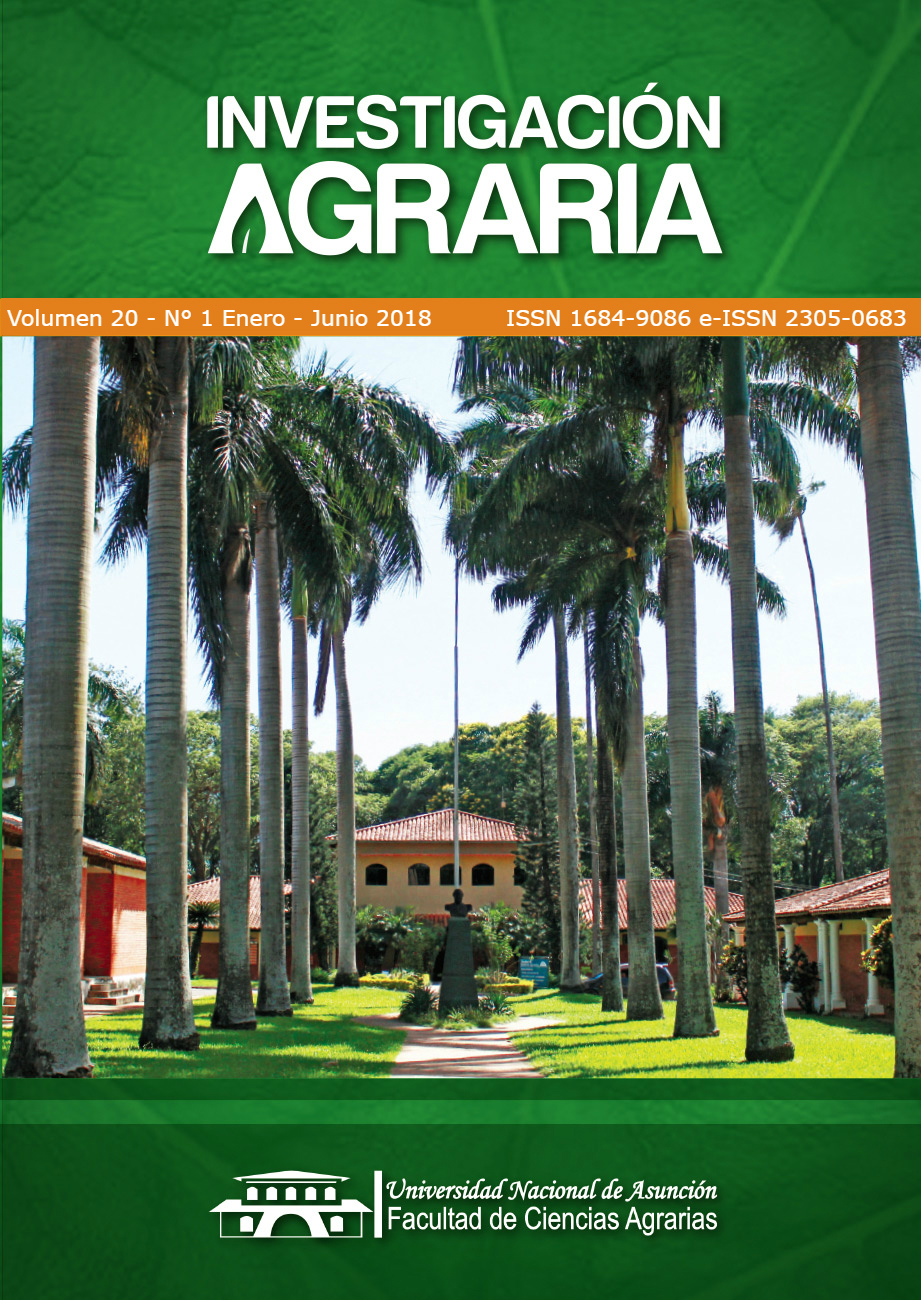Processing and physico-chemical properties of coconut pulp (Acrocomia aculeata) for use as an ingredient in a foodstuff
DOI:
https://doi.org/10.18004/investig.agrar.2018.junio.51-57Keywords:
Acrocomia aculeata, binder, coconut pulpAbstract
The products obtained from the fruit of the coconut palm (Acrocomia aculeata) are several. However, the pulp is used to a lesser extent due to the high acidity of its oil and its high fat content, which hinders its conservation for food purposes. Although the pulp is for human consumption, to obtain a safe food is necessary the knowledge of the process and its physicochemical properties. The objective of this study was to determine the physico-chemical properties of the resulting pulp of two processes for obtaining, one that used the traditional method (process 1) and another in which the whole fruit of the coconut was exposed to pre-drying (process 2) in order to evaluate the subsequent application of the pulp in the manufacture of a foodstuff. Standardized methods of The Grain and Feed Trade Association were used to determine the physic-chemical properties of the pulp obtained and preference tests were used to evaluate the foodstuff. Coconut pulp obtained by the Process 2 had better performance, 32.8% reductions in fat content, 8.1% in humidity, 50% in the acidity of the oil and its caloric value. Afterwards, the coconut pulp was applied as a binder in the production of cereal bars with sesame resulting to be preference to D ratio among four formulations.Downloads
Metrics
References
Aristone, F, Leme, FM (ed.). 2006. Manual didático. Como fazer farinha da bocaiúva: guia completa e livro de receitas. Flavia Maria Leme (colab.). Mato Grosso do Sul, Brasil, Universidade Federal do Mato Grosso do Sul (UFMS). Centro Nacional de Pesquisa e Desenvolvimento Cientifico y Tecnológico - CNPq. 20 p.
AOCS (American Oil Chemists` Society, United States). 1997. Official methods and recomendended practices of the AOCS. 5 ed. Illinois, EEUU.
Cardozo Roman, CJ. 1996. Análisis de um sub-sector de la industria de Productos no Maderables del Bosque (PNMB) del Paraguay. Ka`aguy Revista Forestal del Paraguay 12 (1) : 41-47.
Duarte, S; Lv, P; Almeida, G; Rolón, JC; Perre, P. 2017. Alteration of physico-chemical characteristics of coconut endocarp - Acrocomia aculeata - by isothermal pyrolysis in the range 250°C - 550°C. Journal of Analytical and Applied Pyrolysis 126 : 88-98.
Freitas, SP; Silva, CCCM; Mariano, RGB; Aranda DAG; Couri, S. 2008. Potential for biodiesel synthesis from macauba (Acrocomia aculeata) pulp oil with a high content of free fatty acids. 30th Symposium on Biotechnology for fuels and Chemicals (30), 2008, New Orleans, Estados Unidos, Departament of Energy. v. 1. P 68-68.
GAFTA (The Grain and Feed Trade Association, Inglaterra). 2012. Sampling Rules No. 124 (Incorporating the Methods of Analysis Form No. 130). Rules for sampling, analysis instructions, methods of analysis and certification (en línea). London, Inglaterra. Disponible en: www.gafta.com
Hiane, PA; Baldasso, PA; Marangoni, S; Macedo, MLR. 2006. Chemical and nutritional evaluation of kernels of bocaiuva, Acrocomia aculeata (Jacq.) Lodd. Ciênc. Tecnol. Aliment. 26(3): 683-689.
Ibáñez Moya, FC; Barcina Angulo, Y. 2001. Análisis sensorial de alimentos: métodos y aplicaciones. Barcelona, España, Springer -Verlag Ibérica. 180 p.
INTN (Instituto Nacional de Tecnología y Normalización, Asunción). 1976. Norma Paraguaya de tortas, harinas de extracción y pellets de pulpa y almendra de coco mbokaya NP 133. Asunción, Paraguay, INTN.
Lambaré López, AP. 2016. Aplicación de Lipasas Comerciales en la Obtención de Ésteres Metílicos de Ácidos Grasos a Partir del Aceite de coco (Acrocomia aculeata). Tesis para optar al grado de Bioquímico. Asunción, Paraguay, Facultad de Ciencias Químicas. Universidad Nacional de Asunción, Paraguay. 50 p.
Del Rio, JC; Evaristo, AB; Marques, G; Martin-Ramos, P; Martin-Gil, J; Gutierrez, A. 2016. Chemical composition and thermal behavior of the pulp and kernel oil from macauba palm (Acrocomia aculeata) fruit. Industrial Crops and Products 84: 294-304.
Olivera C, M; Ferreyra D, V; Giacomino M, S; Curia C, A; Pellegrino G, N; Fournier U, M; Apro C, N. 2012. Desarrollo de barras de cereales nutritivas y efecto del procesado en la calidad proteica. Rev Chil Nutr 39(3):18-25
Ramírez Navas, JS. 2012. Análisis sensorial: pruebas orientadas al consumidor. Revista RECITEIA 12(1):83-102.
Sharma, C; Kour, A; Aggarwal, P; Singh, B. 2014. Cereal Bars - A healthful choice. A Review. Carpathian Journal of Food Science and Technlogy 6(2):29-36.
Srebernich, SM; Silva Gonçalves. GM; Ormenese, RCSC; Rodrigues Gomes Ruffi, C. 2016. Physico-chemical, sensory and nutritional characteristics of cereal bars with addition of acacia gum, inulin and sorbitol. Food Sci. Technol 36(3):555-562.
Downloads
Published
How to Cite
Issue
Section
License
Copyright (c) 2018 Investigación Agraria

This work is licensed under a Creative Commons Attribution 4.0 International License.
All content in this journal is under Creative Commons Attribution License.









 All content in this journal is under
All content in this journal is under 